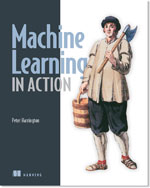
|
|
DSC 478 Fall 2025 Syllabus Comments/Suggestions |
Course Syllabus INSTRUCTOR Email: mobasher@cs.depaul.edu Office: Loop Campus, CDM Building, Room 833 Phone: (312) 362-5174 Office Hours: Thu 4:00-5:00 PM (appointments required) COURSE DESCRIPTION The course will focus on the implementations of various data mining and machine learning techniques and their applications in various domains. The primary tools used in the class are the Python programming language and several associated libraries. Additional open source machine learning and data mining tools may also be used as part of the class material and assignments. Students will develop hands on experience developing supervised and unsupervised machine learning algorithms and will learn how to employ these techniques in the context of popular applications such as automatic classification, recommender systems, searching and ranking, text mining, group and community discovery, and social media analytics. PREREQUISITES
(DSC 441 and DSC 430) or CSC 480 TEXTBOOKS & COURSE MATERIAL We will use numerous online resources and documents throughout the course. The required and recommended textbooks are listed below. The resources directly relevant to topics covered in the course are listed in the Course Material section. Additional resources can be found on the Resources section.
GRADING & COURSE REQUIREMENTS The structure and grading in the class will be centered around 4 assignments and a final project. The assignments will involve Python implementations of selected machine learning techniques and their applications in various domains. They will also involve the use of various Python libraries to perform preprocessing, data exploration/visualization, and data analysis using different data sets. These assignments must be done individually, unless otherwise specified. You may discuss the assignments with others in the class, but you must develop your own solution to the problems in the assignment. Late assignments will be penalized 10% per day (with weekends counting as one day). The final project will involve either developing and evaluating an application that uses one or machine learning algorithms to perform a specific task; or they may involve performing a complete analysis of a complex data set using Python tools. The goal of the project is to integrate several concepts covered during the quarter to achieve a more complex task than those explored in the assignments. Student can propose their own project idea (to be approved) and may complete the project either individually or in groups of up to three members. More details on the final project are available in the Project section. The final grade will be determined (tentatively) based on the following components:
Final Project = 35% TENTATIVE LIST OF TOPICS The following issues and topics will be covered throughout the course. Many of these topics will be revisited several times during the course in a variety of contexts.
| ||||||||||
|
Copyright ©, Bamshad Mobasher, DePaul University | |||||||||||


